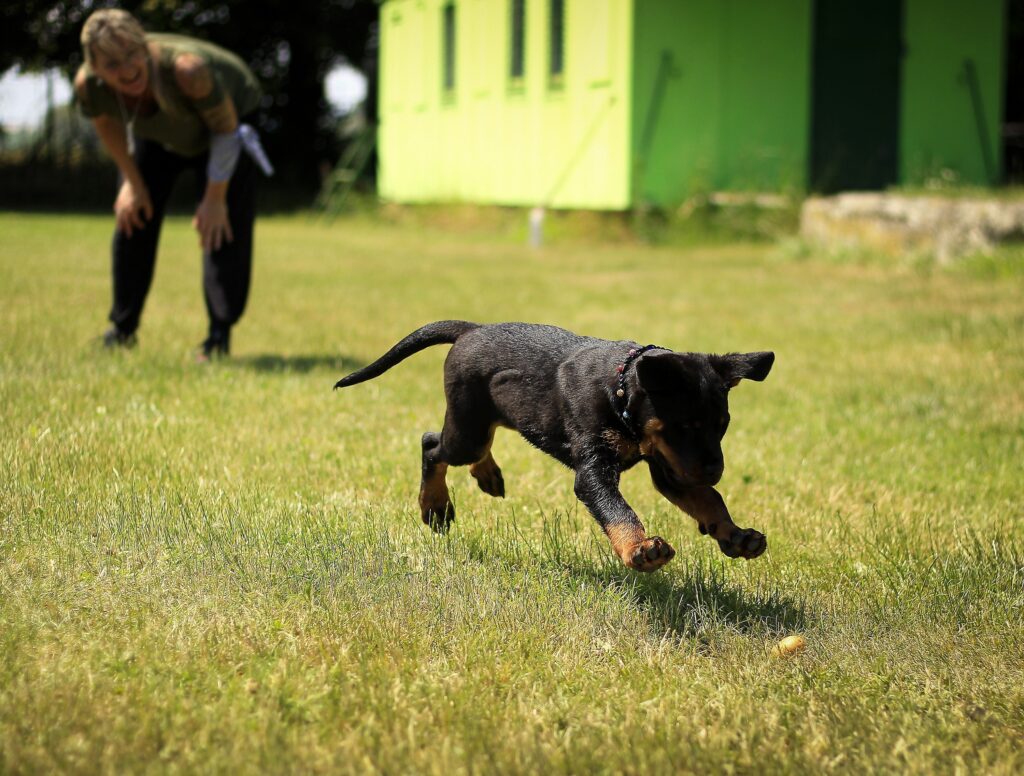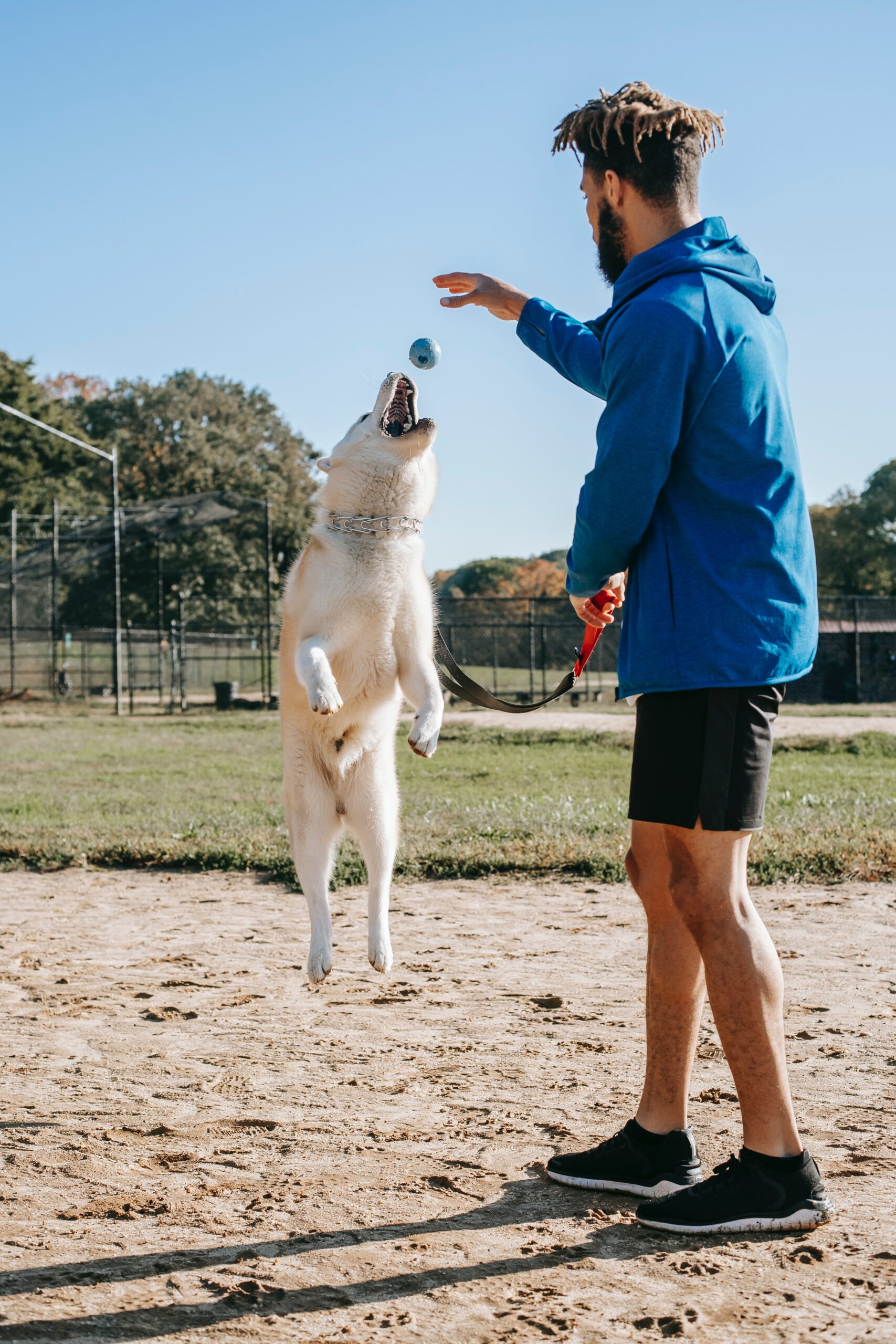Having a well-behaved pup is a dream come true for many pet owners. Training your dog is a great way to bond with your pet, while also teaching them the skills they need to be a well-mannered and obedient companion. Training your dog can be a fun and rewarding experience, and with the right tips and techniques, you can create a successful training program that will help your pup learn the rules and behaviors you need to live happily together. In this guide, we will provide you with tips and techniques to help you train your pup to be a well-behaved pup.
Identifying Your Dog’s Training Needs: How to Assess Your Dog’s Behavioral Issues and Develop an Effective Training Program
Training your dog is not only beneficial for your pet, but it can also help create a stronger bond between you and your companion. To ensure that your dog receives the best care and training possible, it is important to understand your pup’s individual needs and develop a plan to address any behavioral issues that may arise.
The first step in assessing your dog’s training needs is to observe your pup’s behavior. Pay attention to how your dog reacts to different situations, such as when you come home from work, when visitors arrive, or when you take them for a walk. Does your dog bark, jump, or back away? Does your pup have a tendency to pull or lunge on the leash? All of these behaviors can provide valuable insight into your dog’s training needs.
Next, consult with a professional. A qualified veterinarian or animal behaviorist can provide an objective assessment of your pup’s behavior and suggest a tailored training program. This can be especially helpful if your pup has exhibited aggressive behavior or has other behavioral issues that need to be addressed.
Once you have identified your dog’s training needs, it’s time to develop an effective plan. Start by establishing basic commands and teaching your pup to obey them. You can use positive reinforcement techniques, such as treats and praise, to reinforce good behavior. Additionally, provide your pup with plenty of exercise, playtime, and mental stimulation to help keep them engaged and happy.
Finally, be consistent with your training regimen. Dogs are more likely to behave if they know what to expect, so try to maintain a regular schedule and stick to the same commands. If you find that your pup is not responding to your commands, don’t be discouraged. It may take some time for your pup to learn, so remain patient and understanding.
Training your pup can be a rewarding experience. By assessing your dog’s needs and developing an effective training program, you can help ensure that your pup is well-behaved and happy.
Establishing a Foundation of Positive Reinforcement: How to Use Treats, Praise, and Affection to Stimulate Good Behavior
Positive reinforcement is a powerful tool for encouraging desired behaviors in both children and animals. By providing rewards such as treats, praise, and affection, people can create an environment where good behaviors are more likely to occur. This article will provide an overview of how to use these rewards to create a foundation of positive reinforcement for beneficial outcomes.
The most common type of positive reinforcement is the use of treats. Treats are especially effective for animal training, as they can be used to motivate animals to perform desired behaviors. When giving treats, it is important to give them in small amounts and only as rewards for desired behaviors. This will help to reinforce the positive behavior and strengthen the desired behavior in the future.
Praise is another type of reward that can be used for positive reinforcement. Praise is especially effective for children, as it reinforces that the behavior is desired and appreciated. When praising a child, try to be specific and provide them with positive feedback. This will help to create a feeling of accomplishment and self-esteem.
Finally, providing affection can be an effective way to reward positive behaviors. Affection can come in the form of hugs, cuddles, or simply spending time with someone. Affection can be especially effective for animal training, as it can create a bond between the trainer and the animal.
By establishing a foundation of positive reinforcement through the use of treats, praise, and affection, people can create an environment where good behaviors are more likely to occur. This can be especially useful for animal training, as it can help to create a positive bond between the trainer and the animal. Additionally, this strategy can be effective for teaching children, as it reinforces desired behaviors and creates a feeling of accomplishment and self-esteem. With the proper use of rewards, people can help to create an environment where desired behaviors are more likely to occur.

Housebreaking Basics: How to Teach Your Puppy Potty Training in a Few Easy Steps
Potty training is an important part of owning a puppy and it is essential that puppies learn this skill as soon as possible. Housebreaking your puppy can be a daunting task, but it doesn’t have to be. With patience, consistency, and the right strategies, you can teach your puppy potty training in a few easy steps.
The first step to housebreaking your puppy is to establish a routine. Create a schedule for your puppy’s meals and walks and stick to it. This helps to ensure that your puppy will have regular opportunities to go outside and relieve himself. Whenever your puppy does go outside to potty, be sure to praise him and give him a treat.
The next step is to create potty-friendly areas in your home. Choose one or two places in your home where your puppy can go to the bathroom and designate these as potty spots. Make sure to block off any other areas that are not approved for potty breaks.
The third step is to use a consistent cue when it’s time for your puppy to go outside. Using a phrase like “Go potty” and saying it in the same way each time will help your puppy to recognize the cue and learn what it means.
Finally, be sure to clean up any accidents promptly and thoroughly. Use an enzymatic cleaner to get rid of odors and discourage your puppy from going in the same spot again.
By following these steps, you can successfully housebreak your puppy in a few easy steps. With patience and consistency, you can teach your puppy potty training and provide him with the skills he needs to be a well-mannered, obedient pet.
Teaching Obedience Commands: How to Use Consistent Training Techniques for Sit, Down, Stay, and Come
One of the best ways to build a strong bond and trust with your dog is through obedience training. This training, which includes commands such as sit, down, stay, and come, is essential for teaching your dog the appropriate behavior in various situations. Consistent training techniques can help ensure your dog understands and remembers the commands.
To begin training your dog to obey commands, start with the sit command. This is a relatively easy command for dogs to learn and can be used in many situations. To teach your dog to sit, have them stand in front of you and hold a treat in your hand. Ensure that the treat is visible to your dog. Then move your hand up and over their head, away from their face. As your hand moves away, your dog should naturally sit down. After the dogs have sat down, reward them with the treat and give them words of praise. Repeat this process several times to reinforce the command.
The down command is the next step in obedience training. Unlike the sit command, the down command requires your dog to lay down on the ground. To teach this command, you will use the same technique as with sit, but you will need to move your hand lower towards the ground. As your hand moves away, your dog should follow it down and lay on the ground. Give your dog the treat and praise them as soon as they have laid down. Repeat this several times to reinforce the command.

The stay command is used to keep your dog in a certain position, either sitting or lying down. To teach your dog to stay, begin by making them sit or lie down. Then take a few steps back and give the stay command. If your dog stays in the position you have commanded, give them a treat and praise them. If they move, gently guide them back to the position and give the command again. Repeat this several times until your dog understands the stay command.
Finally, the come command is used to bring your dog to you. To teach this command, start by having your dog on a leash and stand about five feet away from them. Give the come command and gently pull on the leash to encourage them to move towards you. As soon as your dog reaches you, give them a treat and praise them. Repeat this several times to reinforce the command.
By using consistent training techniques and lots of patience, you can teach your dog the basic obedience commands of sit, down, stay, and come. With practice and repetition, your dog will learn to obey these commands and become a well-behaved member of the family.
Socialization Tips: How to Introduce Your Dog to Other Dogs and People in an Appropriate Way
Introducing your dog to other dogs and people in an appropriate way is an important part of successful socialization. Socialization helps ensure that your dog is comfortable in all kinds of social situations, and it can help create a positive relationship with your pet. Here are some tips to help you introduce your dog to other dogs and people in an appropriate way.
First, ensure that your dog is properly trained. If your dog is not trained, they may act out of fear or excitement when they meet new dogs or people. Teaching your dog basic obedience commands can help them remain calm and well-behaved in social situations.
When introducing your dog to other dogs, it’s important to read their body language. If your dog is uncomfortable, allow them to have some space. If the other dog appears to be friendly, you can encourage them to interact by allowing them to sniff each other, and then rewarding them with treats or toys when they do.
When introducing your dog to people, it’s important to provide them with a positive experience. Ask the person to avoid sudden movements and to approach calmly. Reward your dog with treats when they remain calm, and allow them to sniff the person. If your dog becomes too excited or fearful, provide them with some space and a break from the situation.
Socialization is an important part of having a well-behaved and friendly dog. By following these tips, you can successfully and safely introduce your dog to other dogs and people in an appropriate way.

Conclusion
Training your dog is an important part of owning a pet and it can be a rewarding experience for both you and your pup. By following some simple tips and techniques, you can ensure that your dog has the best chance of becoming a well-behaved pup. With patience, consistency, and positive reinforcement, you can help your pup learn the behaviors you want them to exhibit and create an even more enjoyable relationship with your pet.




